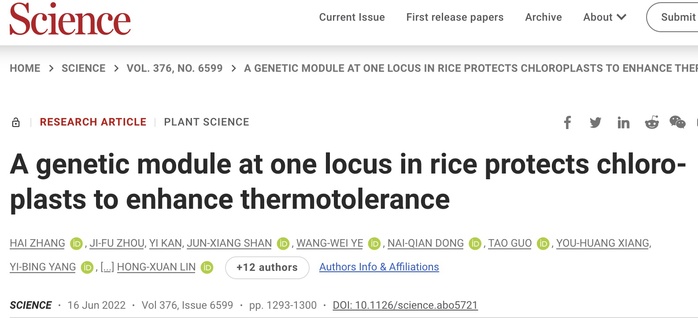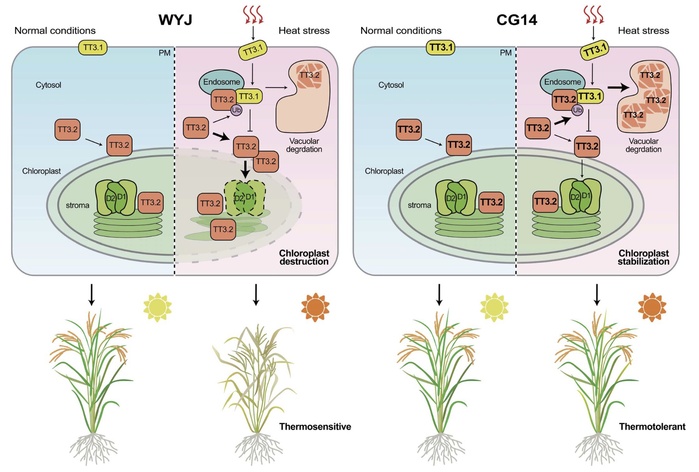As the global warming trend inevitably intensifies, and extreme high temperature become more and more frequent around the world, high temperatures become one of the most threatening factors in the challenge of global food security.

Temperature is a complex physical phenomenon. When plants face changes in environmental temperature, they must transduce this physical signal into a biological signal quickly and effectively, so as to make a rapid response. Most of the plant thermoreceptors identified so far regulate the morphological changes or developmental transformation of plants in a warm environment, and thus far, no thermoreceptors of plants able to resist extreme high temperatures have been reported.
Recently, the research team led by ShanghaiTech Distinguished Adjunct Professor Lin Hongxuan, in collaboration with Professor Lin Youshun of Shanghai Jiao Tong University, identified a quantitative trait locus, Thermotolerance 3 (TT3), consisting of two genes, TT3.1 and TT3.2, that interact together to enhance rice thermotolerance. This research also elucidated a new regulation mechanism of rice thermotolerance. The whole research process took the team 7 years and if we take into account the additional time for preparation of the genetic materials, this research has lasted for nearly 10 years. The findings were published in Science on June 16.
The TT3.1-TT3.2 genetic module discovered in this research is the first to link the high temperature response signal between the plasma membrane and chloroplast, revealing a completely new molecular mechanism of plants’ response to extreme heat stress. Under extreme high temperature (42 °C was set in the research), plasma membrane–localized E3 ligase TT3.1 translocates to the endosome, on which TT3.1 ubiquitinates chloroplast precursor protein TT3.2 for vacuolar degradation, implying that TT3.1 might serve as a potential thermoreceptor. Less accumulated, mature TT3.2 proteins in chloroplasts are essential for protecting thylakoids from heat stress. These findings not only reveal a TT3.1-TT3.2 genetic module at one locus that transduces heat signals from plasma membrane to chloroplasts but also provides the strategy for breeding highly thermotolerant crops.

Proposed model for TT3.1 and TT3.2 function in thermotolerance
The 2022 graduating Ph.D. candidate Zhang Hai of Prof. Lin’s group in SLST was the sole first author on this paper. He started the research upon admission to ShanghaiTech as a master student, and, after 7 year’s effort, he finally attained this well-deserved achievement when he graduated as a Ph.D.

